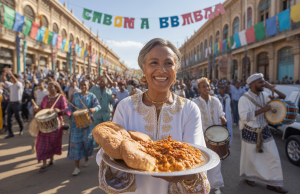As the summer sun reaches its zenith, June 28, 2025, marks a special occasion celebrated across various cultures and traditions—Midsummer Day. This cherished day symbolizes the midpoint of the warmest season, bringing communities together to honor the abundance of nature, light, and joy. But what makes Midsummer Day so unique, and why has this tradition stood the test of time?
A Brief History of Midsummer Day
Midsummer Day has its roots in ancient pagan festivals, where people would celebrate the summer solstice—the longest day of the year. For centuries, this day was associated with rituals and ceremonies to honor the sun and its life-giving energy. In many cultures, Midsummer was a time to mark the turning point of the year, as daylight hours gradually began to wane.
In Christian traditions, Midsummer Day coincides with the feast of St. John the Baptist. The day became intertwined with religious celebrations, blending pagan customs with Christian observances. From Scandinavia to Eastern Europe, the day has been celebrated with dances, bonfires, and feasts, symbolizing purification, protection, and the joy of community.
Why Is Midsummer Day Significant?
Midsummer Day is more than just a celebration of the season—it’s a reminder of humanity’s deep connection with nature. It’s a time to celebrate the sun, which has been a source of inspiration, warmth, and growth. In agricultural societies, the day was often seen as a way to give thanks for bountiful harvests and to pray for continued abundance.
Moreover, Midsummer serves as a cultural touchstone, showcasing the unique traditions and heritage of different communities. Whether it’s the Swedish tradition of dancing around the maypole or the Latvian custom of singing folk songs by the fire, Midsummer Day is a celebration of identity and togetherness.
How Is Midsummer Day Celebrated?
Celebrations of Midsummer Day vary across the globe, but some common elements tie them together—bonfires, flowers, feasts, and music. Here’s a glimpse into some popular traditions:
- Bonfires: Lighting bonfires is a centuries-old tradition that symbolizes the sun’s power and serves as a beacon of hope and protection.
- Flower Crowns: In many European countries, wearing flower crowns is a popular custom, representing beauty, fertility, and the joys of summer.
- Maypole Dancing: Particularly in Sweden, people gather to dance around a decorated maypole, symbolizing life and vitality.
- Feasts and Picnics: Families and friends come together to enjoy delicious meals featuring seasonal produce, including fresh berries, fish, and pastries.
- Traditional Songs and Dances: Folk music and dances add a lively spirit to the celebrations, keeping cultural traditions alive.
Fun Facts About Midsummer Day
- In Finland, Midsummer is also known as “Juhannus” and is considered one of the most important holidays of the year.
- In ancient times, it was believed that herbs and flowers gathered on Midsummer’s Eve had magical properties.
- Some cultures believe that jumping over a bonfire on Midsummer night brings good luck and wards off evil spirits.
- Midsummer is often associated with love and romance, with many legends about finding one’s soulmate on this magical day.
Celebrate Midsummer Day 2025!
As June 28, 2025, approaches, why not plan your own Midsummer celebration? Whether it’s gathering friends for a picnic, crafting your own flower crown, or simply taking a moment to appreciate the beauty of nature, there are countless ways to honor this special day. Share your Midsummer memories and join the global tradition of celebrating light, love, and life!









